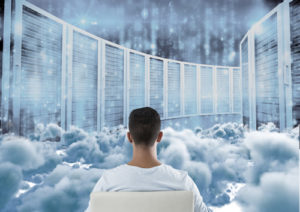We’ve been hearing a lot recently about virtual reality (VR) as one of the hot new trends in education. VR will revolutionize learning, we’re told, because of its immersive qualities and its ability to transport students to previously inaccessible places, like inside a cell or to a penguin colony in Antarctica.
While I agree with the potential of VR to open up exciting new possibilities in education, in reality (no pun intended), I believe we’re 5-10 years away from 3D VR going mainstream in classrooms in K12 or higher ed. This is because 3D VR requires a headset that, while less expensive than they used to be, requires extra spend and maintenance that most schools aren’t equipped to take on. It’s taken the better part of two decades for schools to provide laptops to students, and many schools still are not one-to-one. Schools don’t adopt new technology quickly and VR is unlikely to be an exception.
(There’s another little problem with VR which is that some people experience vertigo and nausea when wearing a VR headset. Imagine if VR becomes a standard learning tech and some percentage of students vomit while watching the construction of the Sphinx…)
While I’m skeptical that VR will make a substantial impact on learning in the near future, I do believe that 2D simulations, the underlying concept behind VR, will have a big impact on classrooms sooner than later. This is because simulations leverage existing classroom technology. In my role as a advisor to edtech companies, I’ve been fortunate to work with several startups that are blazing new trails in simulated learning. Here’s a few examples:
1. Labster – Labster is a Danish company that develops simulated laboratory content for college and high school Biology and Chemistry courses. Labster has a VR product but they deliver most of their content to schools in 2D via the web browser. Unlike physical laboratories which are fraught with risks, virtual labs allow students to experiment without constraints. For example, a student can create a chemical reaction that blows up a beaker, or investigate a crime scene, or use sophisticated instruments like an electron microscope that are cost-prohibitive in the real world. And Labster is proving that their simulations improve learning with several published studies showing substantial student learning gains when combined with traditional instruction.
2. Money Experience – Money Experience is a Cambridge, MA based startup that has created a financial literacy curriculum for high schools and colleges that combines in-class instruction with a virtual life simulator. The life simulator asks students to prioritize the things they care most about in life, such as education, adventure, luxury, family, leisure, career or health. Every decision the student makes in the simulator informs their future finances and their quality of life along the way. The life simulation is a game-changer in financial literacy instruction because it allows students to see their future selves and make connections between financial decisions and the happiness and quality of life. Getting students to care is one the biggest challenges we face and Money Experience addresses this through an ingenious simulation.
3. JustLearn – Not all simulations are digital. JustLearn is a new startup based in St. Petersburg, FL that has developed a simulation of our planet, called PlanetBox, that teaches students about the water cycle and other natural processes. Unlike digital sims, PlanetBox is literally hands-on: students physically assemble the ecosystem, add fish to the tank, fertilize the plant seeds, and monitor the health of the ecosystem over the course of the school year. Aligned to Next Generation Science Standards, the accompanying lesson plans for teachers include topics such as carrying capacity, the needs of seeds, geometric measurement, the role of bacteria, and the nitrogen cycle. Having a self-sustaining simulation of our planet sitting in the classroom with plants that grow and fish that feed them, is an engaging and fun platform for students to learn about STEM.
Editor’s note: This post originally appeared on the Broadreach Edtech Advisors blog.
- Survey: More students want to go to graduate school - April 24, 2024
- Educause, AWS launch generative AI readiness assessment tool for higher ed - April 23, 2024
- A bungled FAFSA rollout threatens students’ college ambitions - April 19, 2024

